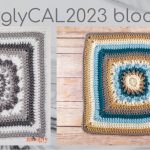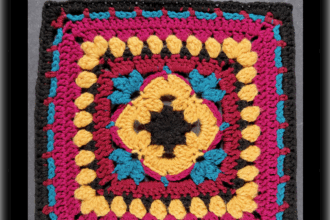Knitted fabric is a fabric made of loops that are connected with each other, and is a large variety of fabrics. Knitted fabrics have good elasticity, moisture absorption, breathability, comfort and warmth, and are the most widely used fabrics for children’s clothing. The raw materials are mainly natural fibers such as cotton, hemp, silk and wool, as well as chemical fibers such as nylon, acrylic, and polyester. Knitted fabrics are rich in texture and variety. , The appearance is unique, and it was mostly used in underwear, T -shirts, etc. in the past.
Knitted fabrics are divided into two categories: warp knitted fabrics and weft knitted fabrics.
weft knitted fabric
flat stitch
One side of the fabric is all positive stitches, while from the other side it appears to be all reverse stitches.
Features: Longitudinal and horizontal extensibility are relatively good, the front is relatively smooth, but there is detachment and curling, and sometimes there is a skew in the longitudinal direction of the coil.
Scope of application: underwear, middle clothes, outerwear, hosiery, gloves, etc.
rib weave
The wales in the fabric are alternately arranged with front stitches and back stitches.
The alternate arrangement of one front wale and one back wale is called 1+1 ribbing, the alternate arrangement of two front wales and two back wales is called 2+2 ribbing, and so on.
Features: There is greater elasticity in the horizontal direction, and it can only be detached against the direction of weaving, and it does not curl.
Scope of application: neckline, cuff, hem of sportswear, underwear, sweater, clothing.
double sided organization
The double-back weave is formed by alternating rows of stitches on the front side and rows of stitches on the back side. There are also 1+1 double side, 2+2 double side and so on.
Features: Both sides are like the reverse side of plain stitch, with good longitudinal extension and elasticity, and can form concave-convex stripes or patterns.
Scope of application: sweaters, sweatshirts or children’s shirts, etc.
double rib weave
The double rib weave is formed by crossing two rib weaves, that is, the wales of another rib weave are arranged between the wales of one rib weave.
Features: Elasticity and extensibility are worse than those of the previous ones, but thicker, better resistance to detachment, and no curling.
Scope of application: winter underwear, pajamas, etc., outerwear.
Leno weave (circle transfer)
A leno weave is a weft knitted weave with interrupted wales.
Features: Holes are formed on the surface of the fabric, and the holes are distributed according to certain rules in the fabric to form patterns.
Bump, mesh effect
Using single-needle multi-row tuck to form concave-convex and mesh effect.
Jacquard
Jacquard weave is a weave formed by knitting yarns on certain needles selected according to pattern requirements.
Features: thick, poor extensibility, good resistance to detachment. A pattern is formed on the surface of the cloth.
circle organization
On some coils, one or more unclosed suspension arcs are set besides a closed old coil.
Features: Poor extensibility and elasticity, good detachment resistance, can form color, concave-convex, hole-piercing and flashing color effects.
Pad tissue
One or several laying yarns are used to form closed hanging arcs on some loops of the fabric in a certain proportion, while the rest of the loops stay on the opposite side of the fabric in the form of floating threads.
Features: It can be used to produce brushed fabrics, fabrics with reduced extensibility, increased thickness, and enhanced durability.
warp knitted fabric
Raschel fabric
The main feature is that the flower shape is large, the cloth surface is rough, and there are many holes, and it is mainly used as a decorative fabric.
Tricot fabric
The cloth is fine and dense, with few designs and colors, but the output is high. It is mainly used for covering fabrics and printed cloths. This kind of fabrics are mostly used for chemical fiber filaments, otherwise the production efficiency is extremely low. Polyester, nylon, vinylon, polypropylene and other synthetic filaments are often used as raw materials, and cotton, wool, silk, hemp, chemical fibers and their blended yarns are also used as raw materials for weaving. It has the advantages of good longitudinal dimensional stability, crisp fabric, low delamination, no curling, and good air permeability. But its lateral extension, elasticity and softness are not as good as weft knitted fabrics.
The difference between warp knitting and weft knitting
- Warp knitting uses multiple yarns to form loops along the longitudinal (warp) sequence of the cloth surface at the same time; weft knitting uses one or more yarns to form loops along the horizontal (weft) sequence of the cloth surface.
- Weft-knitted fabrics can be formed with at least one yarn, but in order to improve production efficiency, multiple yarns are generally used for weaving; while warp-knitted fabrics cannot be formed with one yarn, one yarn It can only form a chain made of a coil. All weft-knitted fabrics can be detached into threads in the opposite direction of weaving, but warp-knitted fabrics cannot.
- Warp knitted fabrics cannot be knitted by hand.
- Weft-knitted fabrics have stretchability, curling properties, and looseness. Warp-knitted fabrics have a stable structure due to the formation of loops and knots, and some have very little elasticity.






